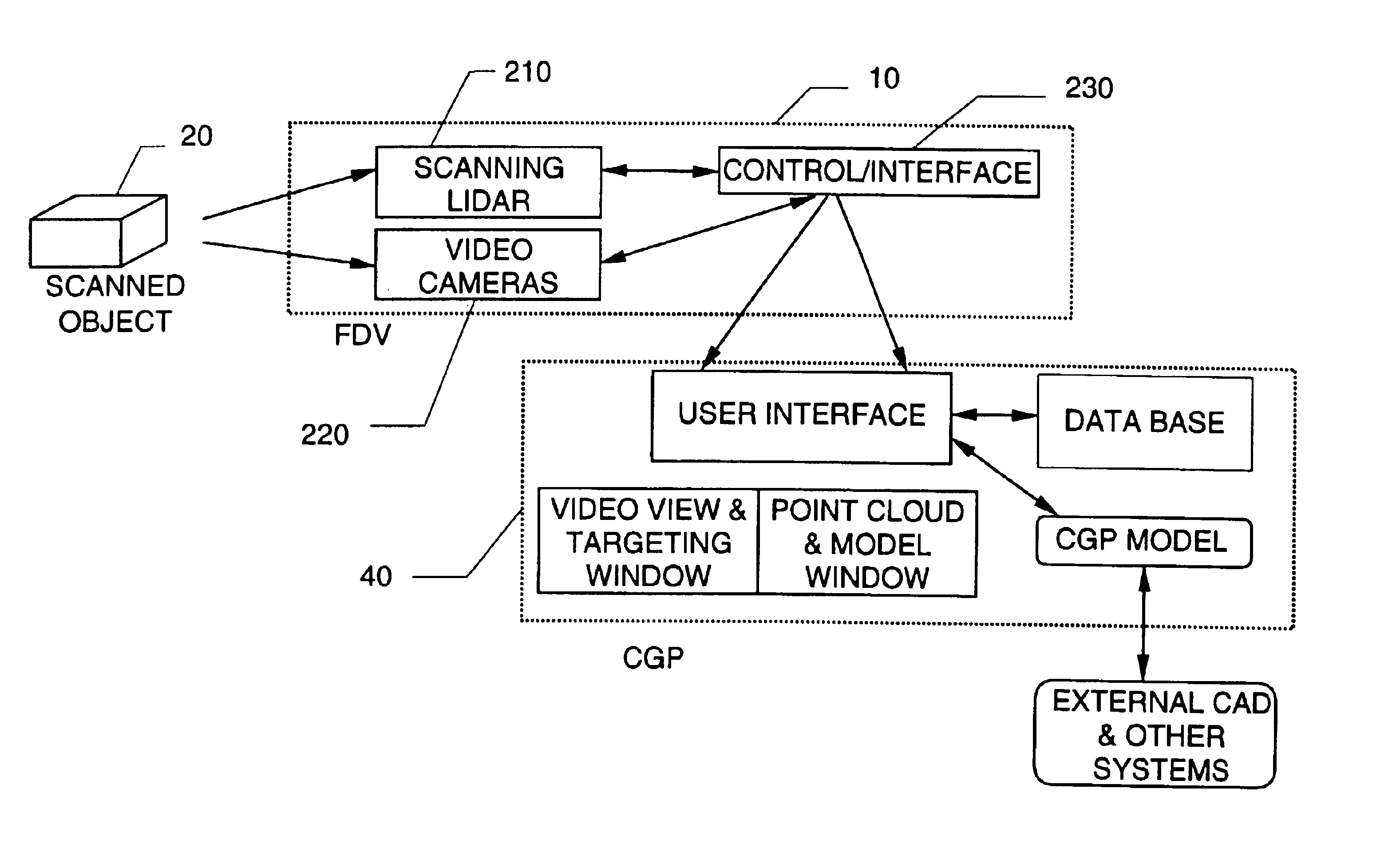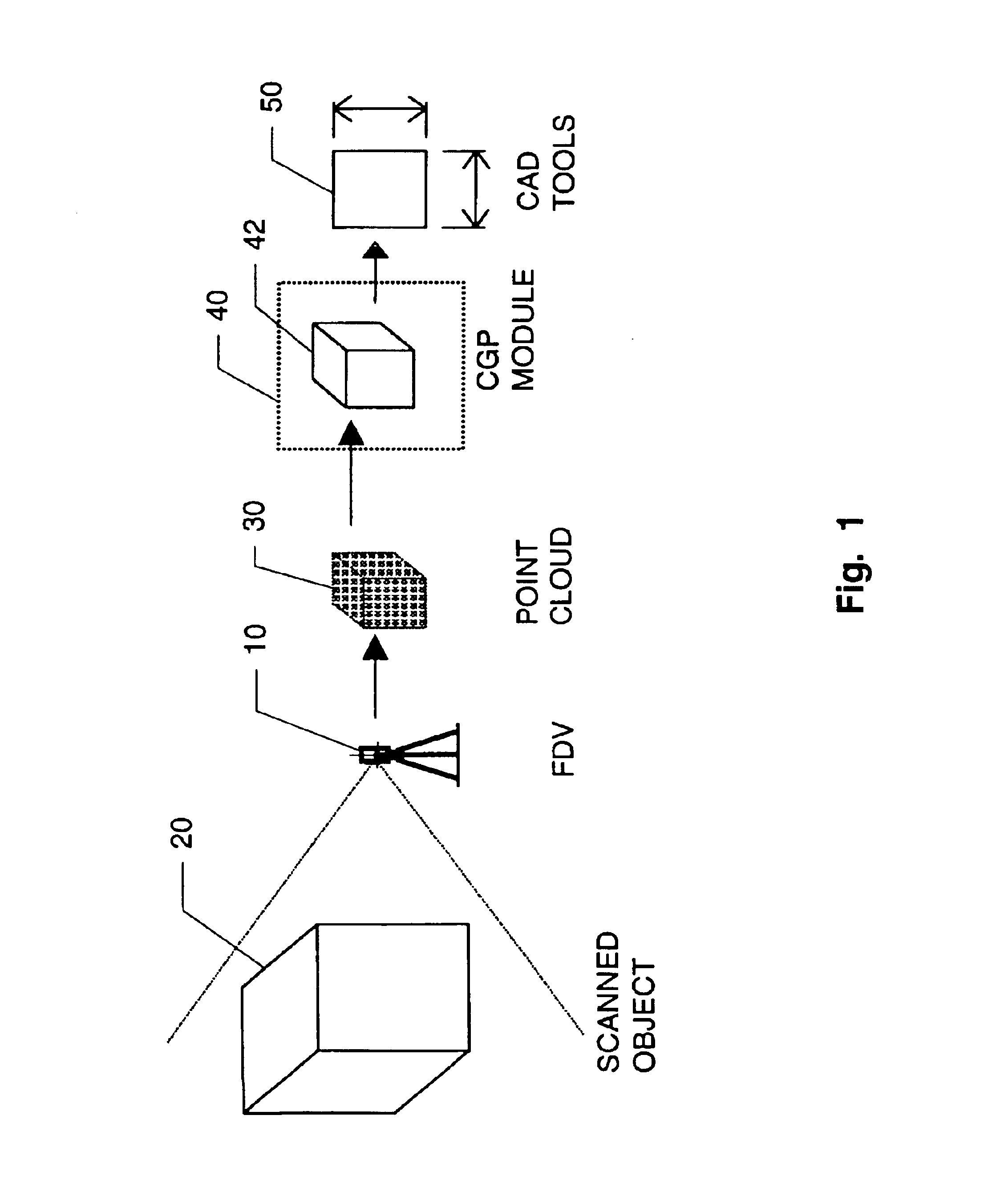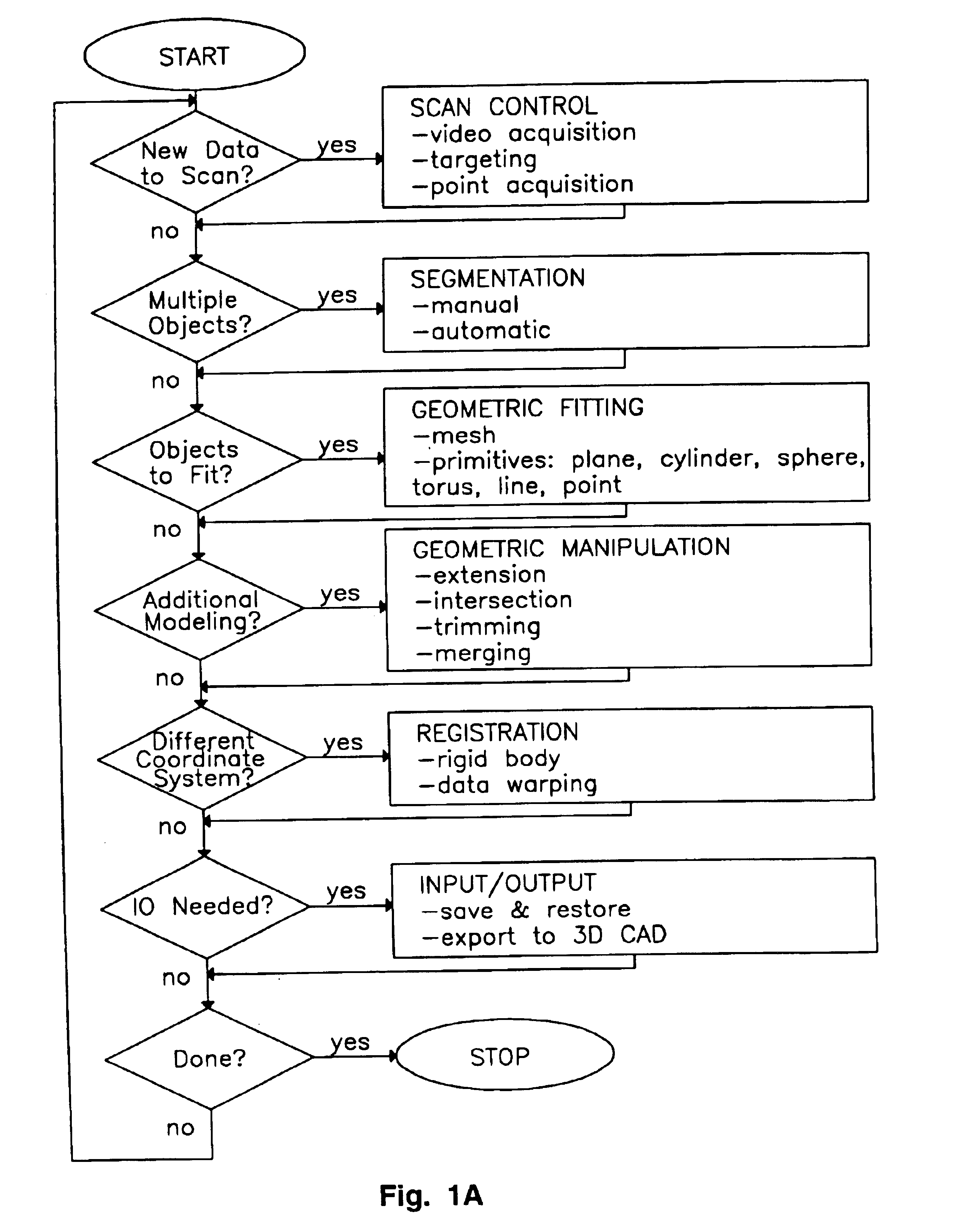Integrated system for quickly and accurately imaging and modeling three-dimensional objects
a three-dimensional object, fast and accurate technology, applied in the direction of distance measurement, instruments, using reradiation, etc., can solve the problems of laborious and time-consuming process, low accuracy, low accuracy, etc., and achieve the effect of reducing labor intensity, time-consuming, and time-consuming
- Summary
- Abstract
- Description
- Claims
- Application Information
AI Technical Summary
Benefits of technology
Problems solved by technology
Method used
Image
Examples
first embodiment
High accuracy and repeatability electronic encoders read the rotational angles of the orthogonal mirrors, and the readings of the mirror rotation angles are precisely timed to coincide with the range reading. Preferably, the system is Class II FDA eye safe. A first embodiment has ±6 mm spatial accuracy over a range of ±50 m. In another embodiment, autofocus capability and 5-6 picosecond electronics are included, which extends the system's range accuracy to ±1 mm and ±1 mm spatial accuracy over ±50 m. The range (and accuracy) of the system can be significantly influenced by the choice of eye safety classification selected, but these limitations are not inherent limitations of the invention itself
The following is a description of the key components of preferred embodiment of the FDV 10. A block diagram of the optical transceiver 502 of the FDV 10 is shown in FIG. 6. The optical transceiver 502 transmits an optical pulse to a spot on object 20, and receives a reflected optical pulse fr...
PUM
 Login to View More
Login to View More Abstract
Description
Claims
Application Information
 Login to View More
Login to View More - R&D
- Intellectual Property
- Life Sciences
- Materials
- Tech Scout
- Unparalleled Data Quality
- Higher Quality Content
- 60% Fewer Hallucinations
Browse by: Latest US Patents, China's latest patents, Technical Efficacy Thesaurus, Application Domain, Technology Topic, Popular Technical Reports.
© 2025 PatSnap. All rights reserved.Legal|Privacy policy|Modern Slavery Act Transparency Statement|Sitemap|About US| Contact US: help@patsnap.com



